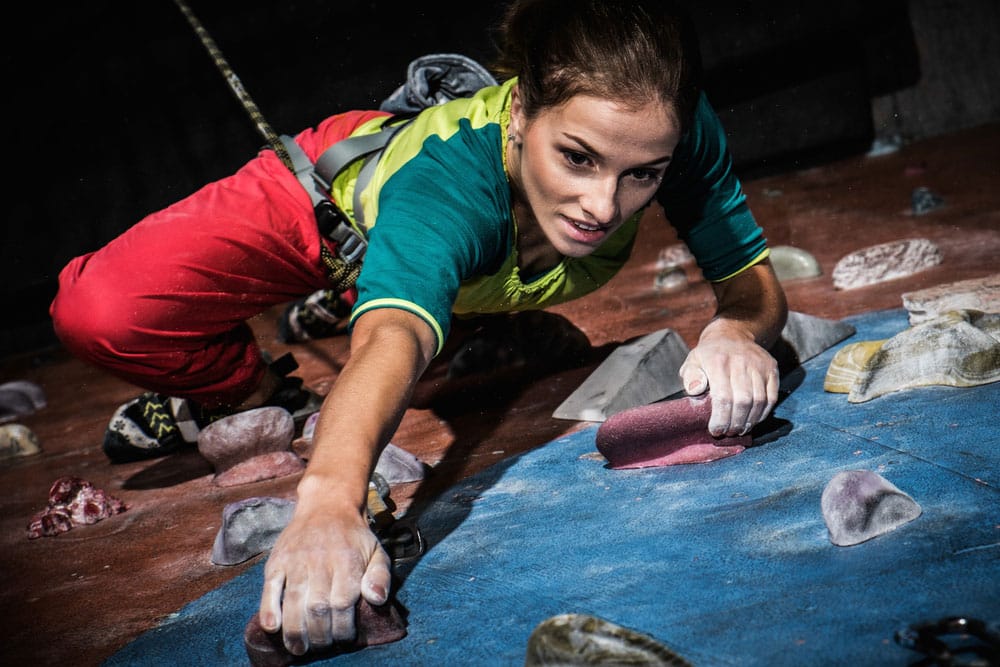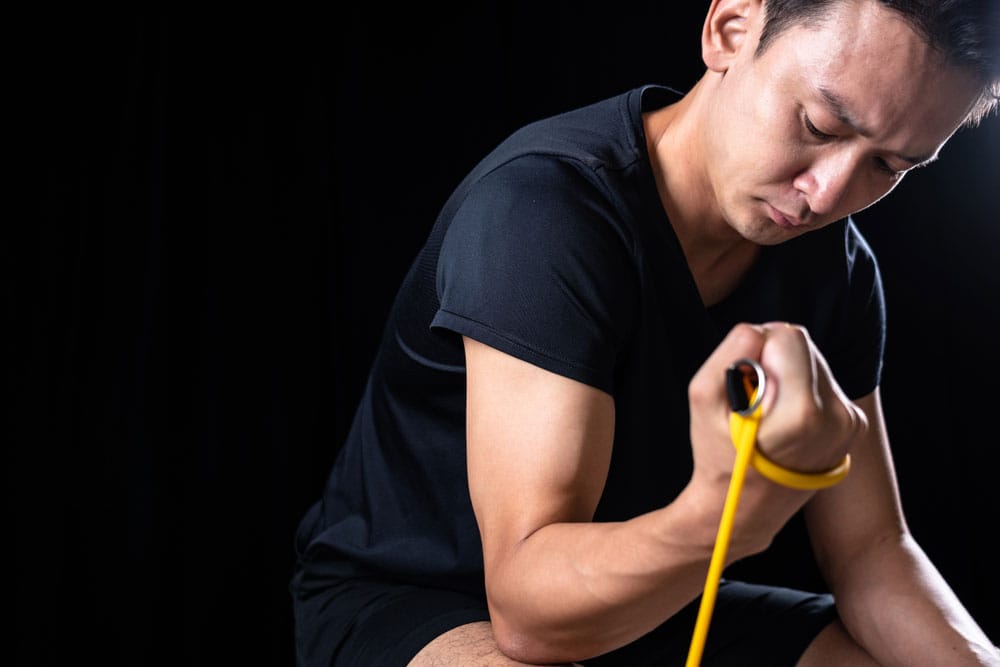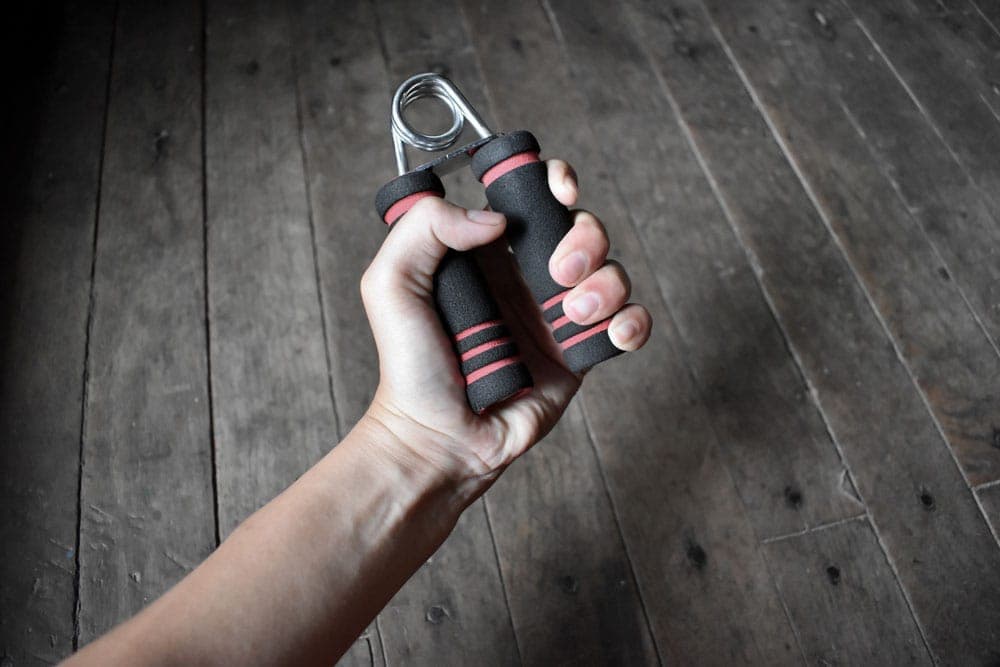Do Hand Grippers Work
This is a guide to using hand grippers. Find out if this piece of equipment can improve grip strength.
If you struggle with bad bicep genetics or a generally weak upper body, you may be researching some ways to improve your arm strength for a more functional and aesthetic physique. An arm strength hack that you may have come across online is hand grippers. Hand grippers work the muscles in your fingers and hands to help you hold onto things for long periods of time. They claim to also give you jacked forearms. But do hand grippers work?
Can these devices really help you train to get bigger forearms?
Hand grippers are marketed as a HAND-y (pun intended) tool to shape up your grip strength if you’re taking a day off from your pull-ups, dead hangs, hanging windshield wiper workouts or any other exercises that force you to hang on for dear life.
But are these devices the real deal or all a sham? Let’s see if hand grippers really work.
What Are Hand Grippers?
Hand grippers are spring-loaded tools that help you improve your grip strength. These tools look sort of like clamps with a handhold you press down on to increase the power of your grip.
They can help you train towards:
- Better finger dexterity
- Stronger hands, wrists, and forearms
- Less stress
You use grip strength to hold equipment in sports like weightlifting, hockey, baseball and rock climbing.
Hand grippers can come in handy if you want to improve your grip off-hours for your sport.
What Muscles Do Hand Grippers Work?
There are a ton of muscles that influence your grip strength. In fact, just your hand has over 30 muscles! You can read How do Hands Work to learn more about the specifics of human grip and hand anatomy.
Basically, anything below your elbow is important when it comes to working towards a strong grip. A few of the key muscles at work during grip strength training are:
- Flexor digitorum profundis (helps you flex your forefingers)
- Flexor pollicis longus (helps you flex your thumb)
- Extensor digitorum communis (helps you extend your fingers, extend your wrist and relax your grip)
To learn more about grip force production below the wrist, see: Factors Affecting Grip Force.
Along with wrist, hand, and finger flexors and extendors, forearm muscles, and even elbow/upper arm muscles can be helpful to train if you’re looking to improve your grip strength too.
This is because these muscles are all interconnected. Muscles like the brachialis and brachioradialis, for example, which help to flex your elbows and the flexor carpi radialis, and flexor carpi ulnaris, which move the wrist all influence how you grip and how you apply your grip.
In exercises that recruit a lot of grip strength, namely pull-ups, it’s just as important to make sure you have strong supporting muscles to work in tandem with your hands and wrists.
How Much Do Hand Grippers Cost?
Hand grippers range in price, typically from around $5-$40. You can find them online through Walmart, Amazon, or pretty much any gym equipment store.
What Are the Types of Grip Strength?
Grip strength is a key indicator of health. In fact, researchers for Clinical Interventions in Aging cite grip strength as an indispensable biomarker for older adults. But no matter your age, it’s an essential thing to try and improve on.
Most of the movements you do in everyday life like holding cooking utensils, pulling door handles open, brushing your teeth, or writing require some level of grip strength.
When we talk about “grip strength” broadly, we’re referring to three main categories. These are:
Pinch Grip
Pinch grip is the force generated between your finger and thumb. We don’t see this type of grip used too much in athletics, but you use it a fair bit in everyday activities. When you’re holding a pen to write, for example, or cutting something with scissors, you use pinch grip.
Crush Grip
Crush grip is the exertion of force between the fingers and palms of your hands. It applies more directly to athletics. When you hold a barbell, for example, you are working your crush grip.
Support Grip
This refers to how long you can sustain your grip. Basically, it’s your ability to hold on to something for a long time. When you do a dead hang, good support grip would let you hold your body up for one minute before dropping down vs. 5 seconds.
There are other types of grip you’ll probably come across in certain situations or activities. Rock climbing, for example, is one of the most challenging sports requiring a lot of grip strength. Here, we see things like hook grips or fingertip grips. If you train for a specific sport, aim to mimic the types of grip you actually use with your hand grippers.

How Can You Strengthen Your Grip?
If you don’t have hand grippers at your disposal, or would like to try other techniques for stronger hands, how can you improve your grip strength?
Reverse Curls
You’re probably familiar with traditional bicep curls. These target your biceps femoris. But if you flip your hands over for a reverse curl, you’re working into the forearm muscles.
Your brachioradialis flexes your elbow at the forearm. Strengthening your forearm muscles is a great way to help you stabilize your grip.
To reverse curl:
- Set-Up: Grab a pair of dumbbells, a barbell or an EZ bar. Stand up with your feet hip-width apart, keeping your back straight and chest proud. Hold your weight with a pronated grip and let it rest against your legs. You may want to keep your thumb on the same side of your weight as your fingers to avoid overtaxing the elbows.
- Lift: Bend your elbows and pull your weight up until you feel a contraction in your biceps. Usually, this will be when your forearms and upper arms are at a 90-degree angle to one another.
- Reverse: Hold for a moment then slowly bring your weight down, working through the resistance and controlling the lowering movement.
- Reps: Perform 3-4 sets of 8-12 reps or adapt the sets and reps to your liking.
Wrist Curls

Even more specific to the grip, aim to add wrist curls to your routine. These work similarly to a reverse curl, only you curl just from the wrist, not through the forearm up to the elbow.
Wrist curls are a highly focused exercise that strengthens one of the weaker areas in the body for many people.
You can train wrist curls both in the same direction as a traditional curl with a supinated grip (palms facing up) or use a pronated grip (palms down) for a reverse wrist curl. Both will help improve your grip strength.
Dead Hangs
If you want to start actually applying your grip strength to an exercise, but don’t have the skills needed yet for moves like neutral grip pull-ups or chin-ups for biceps, the dead hang is the first progression you should be looking at once you’ve taken the plunge of jumping up to your pull-up bar.
Dead hangs work as they sound: You just hang!
It’s simple in theory. But keeping your body straight and motionless in the air while hanging for a prolonged period can be harder than it looks.
In a dead hang, you need to make sure your core and arms are fully engaged to prevent your body from swinging around. The value of training this move with stillness and proper technique will become apparent once you progress to harder variations like pull-ups or even muscle-up progressions.
To dead hang:
- Set-Up: Stand under a high pull-up bar. Bring your arms up with your hands slightly wider than shoulder width apart.
- Hang: Grasp the bar and hang to hold up your full body weight. Keep your core and arms engaged to prevent swinging. Hang for as long as you can.
- Reps: Repeat for at least 3 reps. Aim for 30 seconds or more.
Exercise Balls
Squeezing a small exercise ball in your hand is one of the simplest ways to improve your grip strength. A tennis ball will do if you don’t have a ball specifically for grip training.
- Set-Up: Grab the ball with one hand in your upturned palm. You can choose to bend your elbow for more power and comfort.
- Squeeze: Squeeze the ball as tightly as you can for 5-10 seconds.
- Release: Let your hand release and go slack, taking a short break, then start again.
- Reps: Clasp the ball and release it for at least five 5-second reps, but preferably more if you want to progress quickly.
The beauty of this exercise is that it’s exceedingly simple and portable. You can carry a tennis ball around with you on the bus, in your briefcase, or to school.
No matter where you go, this move will help you take a small step towards improving your grip strength.
Closing Thoughts
To answer the question “Do hand grippers work?” you can say yes, but—
In short, there are many other ways to train your grip that might be more convenient at a given time or more functional, depending on what moves you want to use your grip strength to excel in.
For example, carrying around a tennis ball may feel more natural than bringing your grippers on the go. It also does double duty as, well, a tennis ball!
If you want to fire up a quick tennis match on the outdoor court after work or play a game of catch, you’re already equipped (at least partly).
Hand grippers don’t serve much other purpose than their named function. They can also feel awkward or seem odd to bring with you on the go.
Think about what workouts you hope to train your grip for. If you want to work toward pull-ups, for example, it’s probably more functional to work on dead hangs if you can.
Although grippers do strengthen the muscles around your hands and wrists, it’s important to think about how you want to apply that strength once you’ve build it up.
Ultimately, whether hand grippers work comes down to what you prefer and what you’ll do repeatedly. If you find yourself coming back to your hand grippers time and again to train, then by all means use them! They’re a great way to strengthen your hands and fingers for heavy barbell lifts like squat progressions, hack squats, Smith machine hack squats, landmine hack squats and hack squat alternatives.
They can even teach you how to get better at pull-ups,
References
Ambike, S., Paclet, F., Zatsiorsky, V. M., & Latash, M. L. (2014). Factors affecting grip force: anatomy, mechanics, and referent configurations. Experimental brain research, 232(4), 1219–1231. https://doi.org/10.1007/s00221-014-3838-8
Bohannon R. W. (2019). Grip Strength: An Indispensable Biomarker For Older Adults. Clinical interventions in aging, 14, 1681–1691. https://doi.org/10.2147/CIA.S194543
Huebner, M., Riemann, B., & Hatchett, A. (2023). Grip Strength and Sports Performance in Competitive Master Weightlifters. International journal of environmental research and public health, 20(3), 2033. https://doi.org/10.3390/ijerph20032033
InformedHealth.org [Internet]. Cologne, Germany: Institute for Quality and Efficiency in Health Care (IQWiG); 2006-. How do hands work? 2010 Aug 31 [Updated 2018 Jul 26]. Available from: https://www.ncbi.nlm.nih.gov/books/NBK279362/
Related articles


Get fit with Flex
Build muscle & lose weight fast for free.
Available on iPhone + Apple Watch





